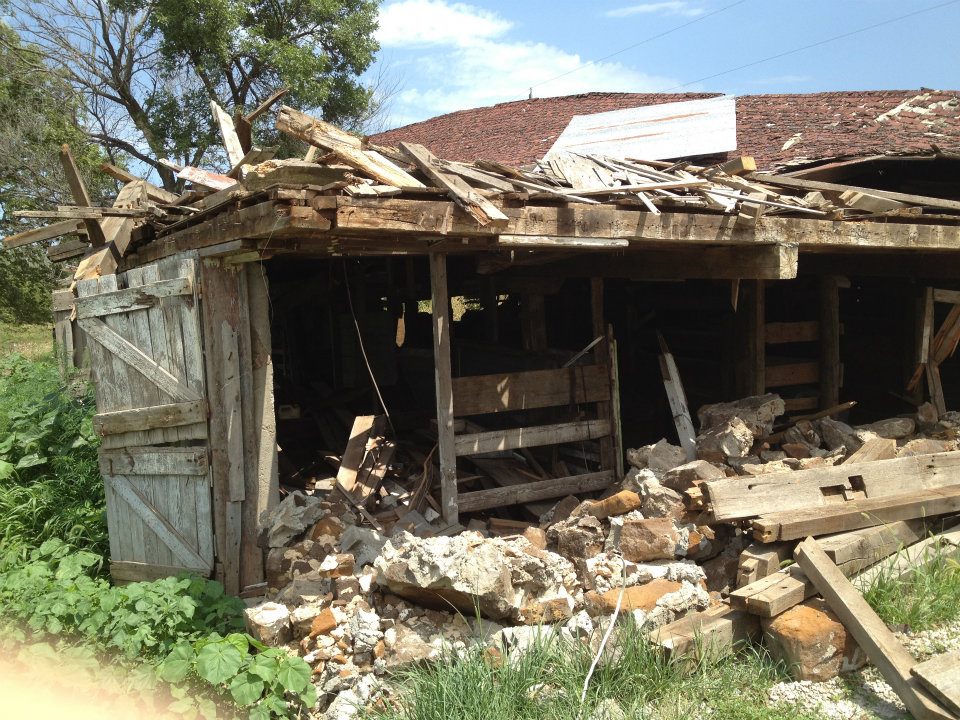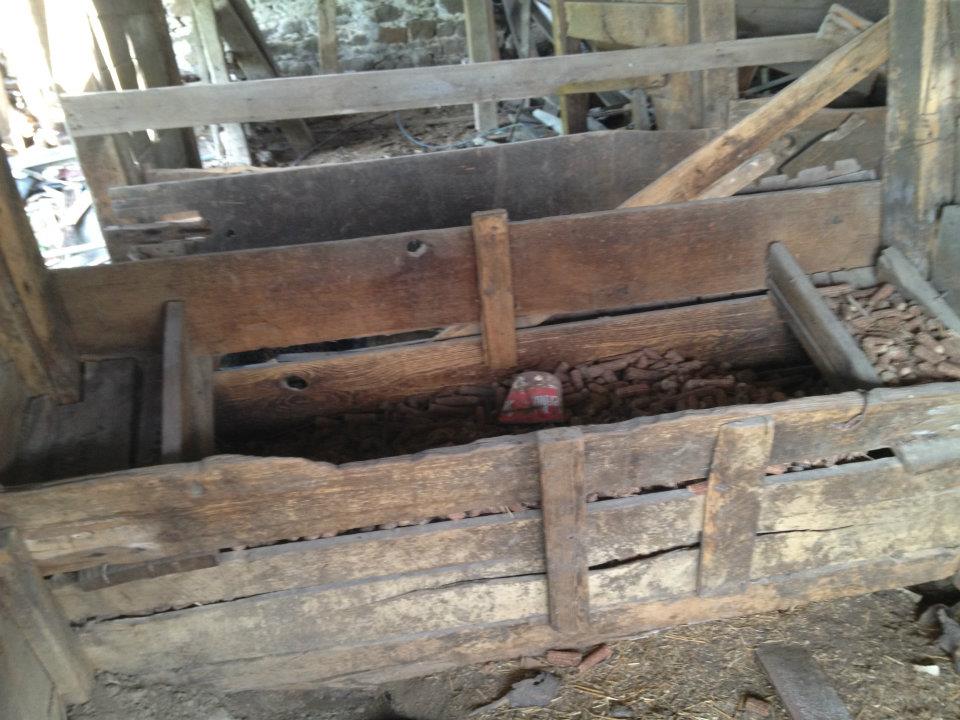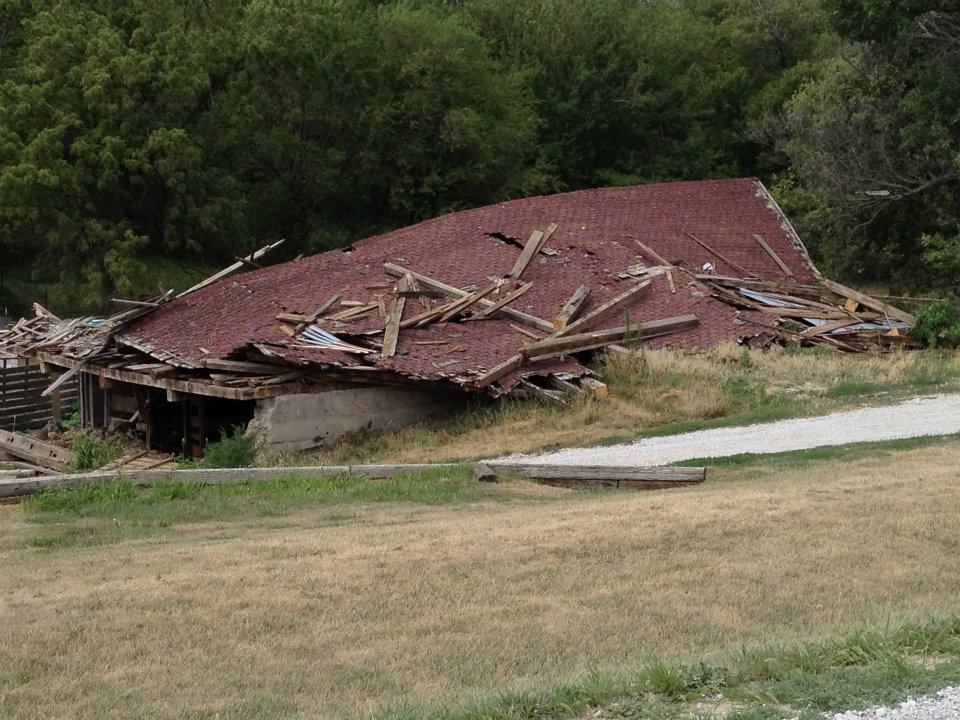Louisville, NE
In 1887 this hay and dairy barn was built on a stretch of farmland in Louisville, Nebraska, using mortise and tenon joints. The mortise and tenon joint has long been a staple of woodworking for thousands of years, used in the construction of the Egyptian pyramids and Stonehenge. It serves as a strong and durable method that enables the wood to fit like a puzzle: a mortise hole is cut into the timber and a tenon, or peg-like wooden piece, fits into the cavity. The original barn builders also used square nails to reinforce the lumber, and Dan collected an entire bucket of rusty square nails before the project was over.
The barn’s owner, Dwayne, used to put up hay in the barn when he was a kid in the 1950s. Back then it was still a dairy barn, and the galvanized milking pipes were still visible under the floor when Dan came to look at it in July 2012. Though Dwayne had worked on the farm into his teen years, he didn’t end up buying the land (and the empty barn) until 1984, purchasing it from a minister who had used the nearby house as a Christian school. From 1984 until 2000, Dwayne raised baby calves in the barn, using the small raised boxes as little pens. No longer having a need for the structure, he had begun to disassemble the barn and was going to burn the remaining structure to the ground before Dan came across it in mid-July.
Dairy barns were used year-round and had to be built for durability; they also had to be fully weatherproofed not only to keep the hay dry, but also for the sensitive dairy cows, who are often known as nervous creatures. Because of the painstaking hard work of measuring, cutting, and fitting this mortise and tenon jointed barn (all done without power tools!), this structure has stood for over 125 years, withstanding brutal snows, torrential rains, painful droughts, howling winds, and tornado scares. With some TLC, your tray might last another 125...
For Barnwood Trays purposes, this barn has been retired.




